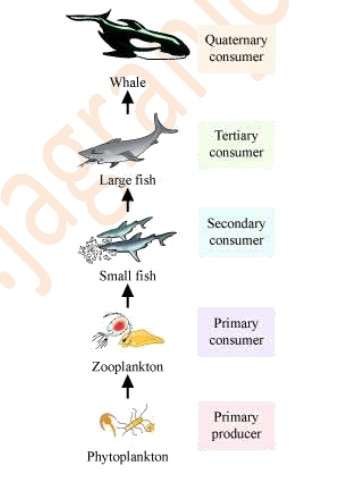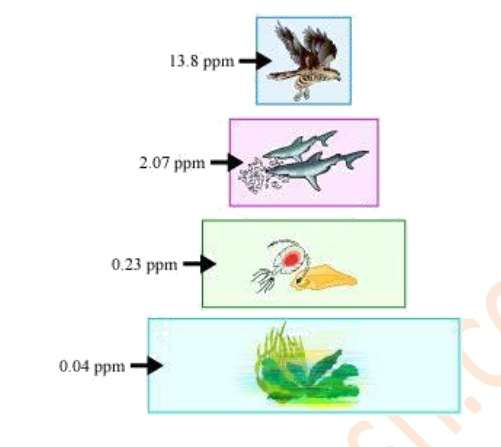NCERT Solutions for Class 10 Science Chapter 13: Both intext and exercise questions are important for students. They help students to check their understanding of topics. Sometimes students might get stuck on a question. In such situations it is essential that students have access to accurate answers to the questions. This article consists of the detailed answers for NCERT Class 10 Science Chapter 13 Our Environment.
NCERT Books help students to gain an understanding of concepts and strengthen their basics. They are published in accordance with the latest CBSE curriculum. These books are recommended due to their explanation of even difficult topics in simple and clear language.
Questions given in the NCERT books are always considered very important as not only do they help you to analyse your understanding of the concepts involved in a chapter but also in preparing for the examinations. Students should read the chapters carefully along with attempting the questions given.
Get the NCERT Solutions for Class 10 Science Chapter 13 here. Download the NCERT Solutions for Class 10 Our Environment in pdf format.
NCERT Class 10 Science Our Environment Solutions
Given below are the questions and answers of NCERT Class 10 Chapter 13 Our Environment. Go through the solutions for the exercise and intext questions carefully.
Intext Questions and Solutions Page no. 212
Q. What are trophic levels? Give an example of a food chain and state the different trophic levels in it.
Sol. On the basis of the source of nutrition such as producers, primary consumers, etc, trophic level is the level of species in an ecosystem.
The producers form the first trophic level as they manufacture food.
The primary consumers form the second trophic level.
The secondary consumers form the third.
The tertiary consumers form the fourth trophic level.

Various trophic levels are connected through food chains. For Example: In an aquatic food chain, phytoplanktons act as producers followed by different consumers as shown below:

Q. What is the role of decomposers in the ecosystem?
Sol. Role of decomposers: Decomposers like bacteria and fungi obtain their food by breaking down the remains of dead plants and animals. They help in the breakdown of organic matter or biomass from the body of dead plants and animals into simple inorganic raw materials.
Intext Questions and Solutions Page no. 214
Q. Why are some substances biodegradable and some non-biodegradable?
Sol. Substances which cannot be decomposed by the living organisms are known as non-biodegradable wastes. For example-glass, plastic, etc.
Substances which can be easily broken down by enzymes are biodegradable wastes. For Example: Paper, Vegetable Wastes, etc.
Q. Give any two ways in which biodegradable substances would affect the environment.
Sol. Biodegradable substances affect the environment in the following ways:
1. Biodegradable substances mainly contain carbon.These substances after decomposition release that carbon back into the atmosphere.
2. Substances like tree leaves ,plant parts, etc. can be used in composting which forms humus. This enhances the soil fertility.
Q. Give any two ways in which non-biodegradable substances would affect the environment.
Sol. Nonbiodegradable substances affect the environment in the following ways:
1. These substances contaminate soil and water resources as they cannot be decomposed by micro-organisms.
2. If these substances are eaten by stray animals, it can harm them and can even cause their death.
Intext Questions and Solutions Page no. 216
Q. What is ozone and how does it affect any ecosystem?
Sol. Ozone is a colourless gas that prevents the entry of UV-rays on earth. Thus, acts as a protective screen.
Formation of ozone: It is continuously formed in stratosphere region of atmosphere.

In recent years, the amount of ozone in the atmosphere is getting depleted. Because of ozone depletion, UV-rays enter on earth & cause a lot of problem. This has an indirect effect on the ecosystem. Because of this, death of many phytoplanktons takes place which in turn affect the whole aquatic food chain. Also, affects the process of photosynthesis. Plants utilise atmospheric CO2to make their food. In the absence of plants, the levels of CO2in the atmosphere will increase, which would in turn lead to an increase in global warming. The depletion in the ozone layer also increases the frequency of infectious diseases as it suppresses the immune systems of both human beings and animals. The frequency of skin cancer also increases in human beings because of the direct exposure to ultraviolet radiations.
Q. How can you help in reducing the problem of waste disposal? Give any two methods.
Sol. The problem of waste disposal can be solved by proper waste management. We have to manage their collection, transport, processing, and disposal.
The problem of waste management can be solved by the following given measures:
1. Use separate bins (blue and green) for disposing non-biodegradable and biodegradable wastes.
2. Reduce the usage of non-biodegradable products such as plastics.
NCERT Class 10 Science Chapter 13 Exercise Questions
Q. Which of the following groups contain only biodegradable items?
(a) Grass, flowers and leather
(b) Grass, wood and plastic
(c) Fruit-peels, cake and lime-juice
(d) Cake, wood and grass
Sol. (c) Fruit-peels, cake and lime-juice
(d) Cake, wood and grass
Q. Which of the following constitute a food-chain?
(a) Grass, wheat and mango
(b) Grass, goat and human
(c) Goat, cow and elephant
(d) Grass, fish and goat
Sol. (b) Grass, goat and human
Q. Which of the following are environment-friendly practices?
(a) Carrying cloth-bags to put purchases in while shopping
(b) Switching off unnecessary lights and fans
(c) Walking to school instead of getting your mother to drop you on her scooter
(d) All of the above
Sol. (d) All of the above
Q. What will happen if we kill all the organisms in one trophic level?
Sol. Various trophic levels are inter-connected through thefood chains. If all the organisms of any one trophic level are killed, then it will disrupt the entire food chain.
For Example: In a food chain, if producers are killed, then all the deer will die due to lack of food. If all the deer are dead, then soon the tigers will also die. Due to the death of these animals, the decomposer’s population will rise in that area.
This is just an example of one food chain. However, in nature, food chains are not isolated. They are interconnected in the form of food web. Therefore, killing all the plants of an area will not only affect the deer, it will also affect other herbivores such as goat, cattle, sheep, etc.
Q. Will the impact of removing all the organisms in a trophic level be different for different trophic levels? Can the organisms of any trophic level be removed without causing any damage to the ecosystem?
Sol. Organisms of all trophic levels are equally important and are an integral part of the ecosystem. If all the producers are removed, then it will affect all the herbivores as it is their primary food source. Death of herbivores will soon affect the primary carnivores and so on.
Now let us suppose that all the deer (herbivores) are killed in a region.
This can lead to an increase in the number of producers. At the same time, there will be an increase in the number of other herbivores such as rabbits, goat, sheep, etc. due to less competition. This will also lead to the increase in population of only consumers of these increased herbivores. Thus, the balance in the ecosystem gets disturbed if any of its component organisms are removed.
Q. What is biological magnification? Will the levels of this magnification be different at different levels of the ecosystem?
Sol. Biomagnification: It is the increase in the concentration of harmful chemicals in the environment at each step of the food chain. The levels of biomagnification will be different at different trophic levels.
For Example: In a pond of water, DDT was sprayed and the producers were found to have 0.04 ppm concentration of DDT.

Q. What are the problems caused by the non-biodegradable wastes that we generate?
Sol. Nonbiodegradable substances affect the environment in the following ways:
1. Since the non-biodegradable substances cannot be broken down, they get accumulated and contaminate the soil and the water resources.
2. If these substances get eaten by some stray animal, it can harm them and can even cause their death.
3. They occupy more space in the landfills and require special disposal techniques.
4. These materials can accumulate in the environment and can also enter the food chain.
Q. If all the waste we generate is biodegradable, will this have no impact on the environment?
Sol. Generation of only biodegradable waste will have a positive impact on the environment. As we know, there is pollution caused by the non-biodegradable wastes. The problem associated with waste management and disposal will also not occur. The population of decomposers will increase to breakdown the extra biodegradable waste generated.
Q. Why is damage to the ozone layer a cause for concern? What steps are being taken to limit this damage?
Sol. Ozone layer is present in stratosphere region. This layer gets depleted day by day but is more prominent over the Antarctic region and is known as the ozone hole.

Consequences of ozone depletion:
1. It causes skin cancer, ageing, and corneal cataracts in human beings.
2. It can result in the death of many phytoplanktons that leads to increased global warming.
To limit the damage to the ozone layer, we have to reduce the usage of CFCs. CFCs used as refrigerants and in fire extinguishers should be replaced with environment-friendly alternatives.
To download these solutions in pdf, refer to the below link:
| Download NCERT Class 10 Science Chapter 13 Our Environment Solutions PDF |
CBSE Video Courses for Class 10 Students
Class 10 students can study effectively for the exams with the help of video courses prepared by the subject matter experts. These video courses will explain the concepts in a simple and interactive manner which will help learners to understand clearly.
Also, check
CBSE Class 10 Science syllabus 2024-25
CBSE Class 10 Science Lab Manual PDF
Microbiology: Definition, Branches, Scope and Types of Microbes
Ecology: Definition, Types, Importance And Examples!
Photosynthesis: Definition, Reaction, Diagram and Process
NCERT Class 10 Science Textbook PDF
Comments
All Comments (0)
Join the conversation